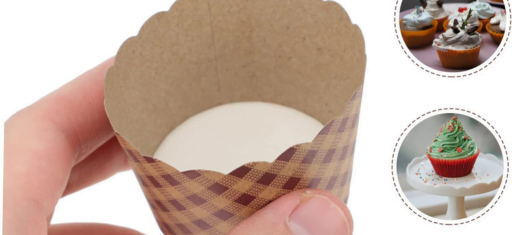Introduction Can you bake cupcakes in cardboard cases
In the dynamic world of baking, exploring unconventional methods can lead to delightful surprises. One such intriguing question that has surfaced is: Can you bake cupcakes in cardboard cases? This article delves into the possibilities and practicalities of this alternative approach. From eco-friendly advantages to cost-effective solutions and creative presentation ideas, we unravel the secrets of baking with cardboard. Join us in this unique baking journey as we address concerns, share real-life experiences, and inspire you to unleash your creativity in the world of cupcakes. Let’s dive in and discover the sweet potential that cardboard cases bring to the baking table.
Advantages of Baking in cardboard Cupcake cases
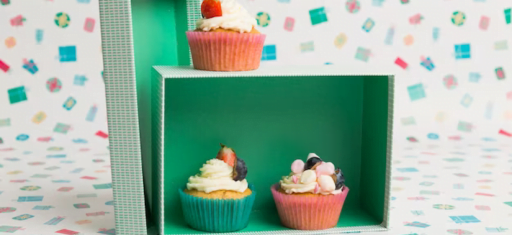
Baking in Cardboard cupcake cases offers a range of advantages, both in terms of environmental impact and cost-effectiveness. Understanding these benefits can inspire bakers to explore this alternative method of cupcake preparation.
Environmental Benefits and Sustainability:
In an era where sustainability is a growing concern, opting for baking in cardboard cupcake cases aligns with eco-friendly practices. Unlike traditional plastic or foil liners, cardboard is biodegradable and compostable. This choice contributes to reducing environmental waste, making it an appealing option for those who prioritize green living.
Moreover, the production of cardboard generally has a lower environmental footprint compared to other materials. The renewable nature of wood pulp, the primary component of cardboard, ensures that the overall impact on the environment is minimized.
Cost-Effective Alternatives to Traditional Cupcake Liners:
Economical considerations play a significant role in any baking venture. Cardboard cupcake cases present a budget-friendly alternative to conventional liners, which may be especially appealing for home bakers and small businesses.
Cardboard is widely available at affordable prices, and in many cases, recycled materials can be utilized, further reducing costs. This cost-effectiveness allows bakers to maintain a high standard of presentation without compromising on the quality of their cupcakes.
In addition, the availability of cardboard in various sizes and shapes provides flexibility for customization, catering to the diverse preferences of both bakers and consumers.
In summary, embracing cardboard cupcake cases not only contributes positively to the environment but also proves to be a pragmatic and economical choice for those passionate about baking. The next section will delve into the nuances of selecting the right cardboard cases to ensure a successful baking experience.
Choosing the Right Cardboard Cases
Selecting suitable cardboard cases for baking is crucial to ensure the success of your cupcakes. This section provides a comprehensive guide to help you make informed choices based on the type of cardboard, size, and other essential considerations.
Overview of Different Types of Cardboard Materials:
Not all cardboard is created equal, and understanding the different materials is fundamental to choosing the right cases for baking. Generally, cardboard is made from a combination of paper pulp and sometimes additional materials for reinforcement.
- Standard Cardboard: This is the most common type, typically used for packaging. While suitable for baking, it may require additional reinforcement.
- Greaseproof Cardboard: Treated to resist grease and moisture, this type is ideal for baking as it minimizes the risk of the cupcakes sticking to the cases.
- Recycled Cardboard: Environmentally conscious bakers may opt for recycled cardboard, contributing to sustainability. Ensure it meets baking standards and has adequate thickness.
Factors to Consider When Selecting Cardboard Cases:
- Heat Resistance: Cardboard’s heat resistance varies, so it’s crucial to choose cases that can withstand the baking temperatures. Greaseproof or oven-safe cardboard is preferable.
- Size and Shape: Ensure the cases fit your cupcake trays snugly. Consider the desired presentation – standard, mini, or unique shapes – and select cardboard cases accordingly.
- Thickness: Thicker cardboards provide better stability and insulation during baking. Strike a balance, avoiding cases that are too thin or too thick for your specific needs.
- Color and Design: While not affecting the baking process, the aesthetic appeal is essential. Choose colors and designs that complement your cupcakes and align with your presentation goals.
Tips for Reinforcing Cardboard Cases:
To enhance the structural integrity of cardboard cases, consider the following tips:
- Double-Layering: Using two cases for each cupcake adds stability and prevents potential sogginess.
- Lining with Parchment: Inserting parchment paper inside the cardboard case provides an extra layer of non-stick protection.
- Pre-Baking Treatment: Lightly greasing the inside of the cardboard or dusting with flour can prevent sticking and enhance the overall baking experience.
By carefully considering these factors, you can confidently choose the right cardboard cases for your cupcakes, ensuring a seamless and successful baking process. The following section will guide you through preparing cardboard cases to prevent any mishaps during baking.
Preparing Cardboard Cases for Baking
To achieve optimal results when baking cupcakes in cardboard cups, proper preparation is key. This section outlines essential steps to take before placing your cupcakes in the oven, ensuring they come out flawlessly without sticking or compromising structural integrity.
Necessary Pre-treatment or Lining to Prevent Sticking:
While cardboard has a natural non-stick quality, taking additional measures can prevent any potential issues during the baking process.
- Light Greasing: Apply a thin layer of cooking spray or brush a small amount of melted butter inside each cardboard case. This helps create a non-stick surface and ensures easy removal of the cupcakes after baking.
- Dusting with Flour: Lightly dusting the interior of the cardboard cases with flour is another effective method to prevent sticking. This is especially useful if you prefer not to use cooking sprays.
- Use of Greaseproof Cardboard: Opting for greaseproof cardboard cases eliminates the need for additional pre-treatment. These cases are specifically designed to resist moisture and grease, offering a naturally non-stick surface.
Tips for Reinforcing Cardboard Cases to Withstand Heat:
Cardboard, while versatile, may require some reinforcement to withstand the heat of the oven and maintain its structural integrity.
- Double-Layering: To add an extra layer of protection, consider double-layering the cardboard cases. Place one case inside another before filling it with batter, providing additional insulation against the heat.
- Parchment Paper Inserts: Inserting small parchment paper circles at the bottom of each cardboard case helps prevent direct contact between the batter and the cardboard. This not only aids in easy release but also ensures the structural stability of the cases.
- Cardboard Cupcake Collars: Wrap thin strips of cardboard around the exterior of each case, creating a collar that adds support and prevents potential warping during baking.
By implementing these pre-treatment and reinforcement techniques, you set the stage for a successful baking experience with cardboard cases. The following section will guide you through the actual baking process, discussing adjustments to time and temperature for optimal results.
Baking cupcakes in Cardboard Cases process
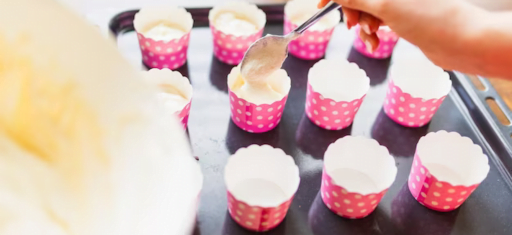
Successfully baking cupcakes in cardboard cases requires thoughtful adjustments to traditional baking methods. This section provides insights into modifying time and temperature settings, as well as ensuring even heat distribution for uniformly baked and aesthetically pleasing cupcakes.
Adjustments to Baking Times and Temperatures:
- Temperature Considerations: Since cardboard is not as heat-conductive as traditional baking materials, it’s advisable to slightly reduce the oven temperature. Decrease the temperature by about 25°F (14°C) from the standard baking temperature recommended for cupcakes. This adjustment prevents the cardboard from becoming too hot and potentially affecting the texture of the cupcakes.
- Extended Baking Times: Expect a slightly longer baking time when using cardboard cases. The insulation properties of cardboard may slow down the baking process. Regularly check for doneness by inserting a toothpick into the center of a cupcake; if it comes out clean, they are ready.
- Monitor Closely: Keep a close eye on the cupcakes during the last few minutes of baking. Cardboard cases can brown quicker than traditional liners, so it’s essential to prevent overcooking. If necessary, cover the cupcakes with aluminum foil to shield them from excessive heat.
Ensuring Even Heat Distribution for Uniform Cupcakes:
- Proper Placement in the Oven: Arrange the cupcake trays in the center of the oven to ensure even heat distribution. This prevents one side of the cupcakes from cooking faster than the other.
- Rotate the Trays: Midway through the baking process, rotate the cupcake trays 180 degrees. This helps compensate for any variations in oven temperature and ensures uniform baking across all cupcakes.
- Use of Baking Stones or Tiles: Placing a baking stone or tiles on the oven rack helps regulate and distribute heat evenly. This additional measure contributes to consistent baking results, particularly important when using non-traditional materials like cardboard.
By making these adjustments during the baking process, you’ll overcome the unique challenges posed by cardboard cases. The next section will delve into the potential impact of baking in cardboard on the flavor of your cupcakes and provide suggestions for complementary flavors.
Flavor Impacts and Considerations of baking cupcakes in cardboard cups
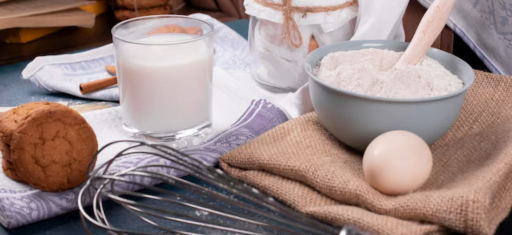
Exploring the realm of baking cupcakes in cardboard cups prompts considerations regarding potential flavor impacts. This section delves into whether cardboard influences cupcake taste and provides suggestions for flavors that harmonize well with the unique baking method.
Does Cardboard Affect Cupcake Taste?
The primary concern when baking in cardboard cases is whether the material imparts any unwanted flavors to the cupcakes. Fortunately, when using high-quality, food-grade cardboard, the impact on taste is generally minimal. The cardboard’s neutral properties allow the true flavors of the cupcake to shine through.
However, it’s essential to choose cardboard that is specifically designed for baking, ensuring it is free from any chemicals or additives that could compromise the taste. Additionally, greaseproof cardboard is an excellent choice, as it further minimizes the risk of flavor transfer.
Suggestions for Complementary Flavors:
To enhance the overall experience and complement the subtle nuances of baking in cardboard, consider the following flavor combinations:
- Vanilla and Citrus: The light and airy notes of vanilla pair well with the refreshing citrus flavors, creating a balanced and delightful taste experience.
- Chocolate and Coffee: Rich chocolate cupcakes with a hint of coffee not only provide a delicious contrast but also add depth to the overall flavor profile.
- Lemon and Berry: The bright acidity of lemon combined with the sweetness of berries creates a refreshing and vibrant flavor that compliments the neutral backdrop of cardboard.
- Spiced Pumpkin: Embrace the warmth of autumn with spiced pumpkin cupcakes. The earthy spices enhance the overall taste without overpowering the delicate cardboard influence.
- Coconut and Pineapple: Transport your taste buds to a tropical paradise by combining coconut and pineapple flavors. The sweetness and tartness create a harmonious blend that pairs well with the neutral cardboard base.
Experimenting with various flavor combinations allows you to tailor your cupcakes to personal preferences while capitalizing on the unique baking method. The next section will explore creative ways to decorate and present cupcakes baked in cardboard cases, maximizing their aesthetic appeal.
Decorating and Presenting Cupcakes in Cardboard Cases
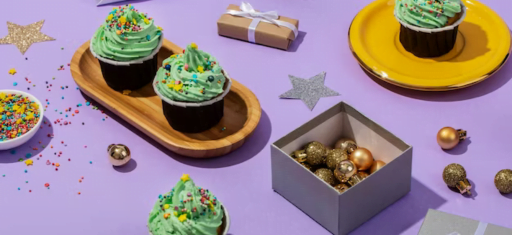
Elevating the visual appeal of cupcakes baked in cardboard cases adds an extra layer of charm to your creations. This section explores creative ways to decorate and present cupcakes, maximizing the aesthetic advantages offered by the unique texture and color of cardboard.
Creative Ways to Enhance Visual Appeal:
- Natural Texture Embrace: Allow the natural texture of the cardboard to become a part of the cupcake’s aesthetic. Opt for simple, rustic designs that highlight the earthy tones and subtle patterns of the cardboard.
- Painted Accents: Explore the artistic side of baking by adding painted accents to the cardboard cases. Use edible food coloring or edible paints to create intricate designs or vibrant patterns that complement the cupcake’s flavors.
- Decorative Wrappers: Invest in or create decorative cardboard wrappers that encase the cupcakes. These wrappers can be adorned with intricate cutouts, lace patterns, or thematic designs, providing an additional layer of visual appeal.
Showcasing the Aesthetic Advantages of Using Cardboard for Cupcakes:
- Earth-Friendly Theme: Embrace the environmentally conscious aspect of using cardboard by incorporating nature-inspired themes. Decorate cupcakes with edible flowers, leaves, or other botanical elements, creating a harmonious connection between the cupcakes and their eco-friendly cases.
- Color Coordination: Coordinate the colors of the cupcake batter, frosting, and decorations with the natural hues of the cardboard. This cohesive color scheme enhances the overall presentation and creates a visually pleasing display.
- Customized Toppers: Craft customized toppers that reflect the theme or occasion. Whether it’s edible flowers for a springtime feel or personalized fondant toppers for a special celebration, these additions draw attention to the uniqueness of the cupcakes.
Balancing Aesthetics and Flavor:
While focusing on visual appeal, it’s crucial to strike a balance to ensure that the aesthetics do not overpower the flavor. The goal is to create an enticing presentation that complements the delightful taste of the cupcakes.
Experiment with different decorating techniques and themes to discover what resonates best with your style and the occasion. The next section will address concerns and common misconceptions related to baking in cardboard, providing clarity and reassurance for those considering this unconventional method.
Addressing Concerns and Common Misconceptions

As with any unconventional baking method, there are concerns and misconceptions surrounding the practice of baking cupcakes in cardboard cups. This section aims to dispel myths, address potential worries, and provide clarity on the health and safety aspects associated with using cardboard in the baking process.
Dispelling Myths about Baking in Cardboard:
- Flame Resistance: One common misconception is that cardboard cases may catch fire in the oven. In reality, modern cardboard materials designed for baking are heat-resistant and undergo stringent safety testing. When used appropriately, they pose no risk of combustion.
- Toxic Emissions: Some worry about the release of toxic fumes from cardboard during baking. Food-grade cardboard, specifically designed for baking purposes, is free from harmful chemicals, and safe how to use cardboard baking cups in ovens. It undergoes rigorous testing to ensure compliance with food safety standards.
Addressing Potential Health and Safety Concerns:
- Cardboard Quality Matters: To ensure the safety of your baked goods, choose high-quality, food-grade cardboard. Verify that the cardboard is explicitly labeled as safe for baking and meets relevant industry standards.
- Avoiding Direct Contact with Flames: While cardboard is heat-resistant, it is essential to avoid direct contact with flames in the oven. Position cupcake trays in the center of the oven and maintain a safe distance from heating elements to prevent any accidental exposure to open flames.
- Proper Storage and Handling: Ensure proper storage of cardboard cases in a cool, dry place to prevent moisture absorption. Handling the cases with clean, dry hands also contributes to maintaining their integrity during baking.
Encouraging Safe and Informed Practices:
Baking cupcakes in cardboard cases is a safe and enjoyable alternative when approached with the right knowledge and precautions. By dispelling common myths and addressing concerns, this section aims to instill confidence in bakers who may be hesitant to explore this unique method.
The subsequent section will showcase testimonials and experiences from bakers who have successfully embraced cardboard cases, sharing their insights and contributing to a broader understanding of the feasibility and benefits of this unconventional approach.
Testimonials and Experiences
Real-life experiences of bakers who have ventured into the realm of using cardboard cases for cupcakes offer valuable insights and inspiration. This section presents testimonials, sharing success stories and lessons learned, to provide a firsthand perspective on the practical aspects of baking with cardboard.
Positive Feedback and Success Stories:
- Eco-Friendly Enthusiasts: Bakers who prioritize sustainability commend cardboard cases for their eco-friendly nature. Their testimonials highlight the satisfaction of contributing to environmental conservation without compromising on baking quality.
- Cost-Conscious Creatives: Small businesses and home bakers, focused on cost-effectiveness, share their success stories. They appreciate the affordability of cardboard cases, allowing them to maintain a high standard of presentation without breaking the bank.
Challenges Encountered and Lessons Learned:
- Heat Distribution Awareness: Some bakers acknowledge a learning curve in understanding the nuances of heat distribution when using cardboard. Through experimentation, they found that adjusting baking times and temperatures was crucial to achieving consistently well-baked cupcakes.
- Reinforcement Techniques: Bakers emphasize the importance of reinforcing cardboard cases for stability. Double-layering, using parchment paper inserts, and experimenting with cardboard collars are cited as effective methods to overcome potential challenges during baking.
Encouraging Experimentation and Adaptation:
Testimonials underscore the versatility of cardboard cases for cupcakes, catering to a diverse range of baking preferences and requirements. While challenges may arise, the shared experiences provide valuable tips and insights for others looking to embark on their cardboard baking journey.
In conclusion, this section encourages bakers to draw inspiration from the successes and lessons of their peers, fostering a community of innovation and experimentation in the world of baking. The final section will summarize key points from the article and encourage readers to explore the unique possibilities offered by baking cupcakes in cardboard cases.
Best cupcakes in cardboard cases
Looking for the perfect cupcakes with convenient cardboard cases? Look no further! Our bakery offers the most delicious cupcakes packaged in eco-friendly cardboard baking cups. Not only are these cupcakes irresistibly tasty, but the cardboard cases also add a touch of sustainability to your indulgence. Whether you’re hosting a party, celebrating a special occasion, or simply craving a delightful treat, our cupcakes in cardboard cases are the ideal choice. Plus, with the added convenience of easy disposal, you can enjoy your cupcakes guilt-free. Click here to purchase these delectable treats and experience the perfect blend of flavor and eco-consciousness: [Amazon].
Conclusion and Final Thoughts
As we conclude this exploration into the world of baking cupcakes in cardboard cases, it’s evident that this alternative method offers a range of benefits and creative possibilities. Let’s recap the key points and encourage readers to embrace the unique experience.
Summarizing Key Points from the Article:
- Environmental Advantages: Cardboard cases provide an eco-friendly alternative, contributing to sustainability efforts in the baking community.
- Cost-Effectiveness: Bakers, both at home and in small businesses, appreciate the affordability of cardboard, enabling them to maintain high-quality presentations without a significant financial investment.
- Choosing the Right Cardboard: The selection of appropriate cardboard materials, consideration of factors like heat resistance and thickness, and reinforcement techniques are crucial for successful baking.
- Baking Process Adjustments: Modifying baking times and temperatures ensures optimal results when using cardboard cases, and proper heat distribution is essential for uniform cupcakes.
- Flavor Considerations: High-quality cardboard has minimal impact on cupcake taste, allowing for diverse flavor combinations that complement the neutral backdrop.
- Creative Presentation: Decorating cupcakes in cardboard cases offers a canvas for creative expression, with suggestions ranging from embracing natural textures to using painted accents.
- Addressing Concerns: Dispelling myths and addressing safety concerns assures bakers that, when done correctly, baking in cardboard is a safe and enjoyable practice.
- Testimonials and Experiences: Real-life experiences from other bakers provide valuable insights, success stories, and lessons learned for those considering this unconventional method.
Encouragement to Explore and Experiment:
In the spirit of baking innovation, this article encourages readers to explore the unique possibilities presented by cardboard cases. Whether you’re motivated by environmental consciousness, cost-effectiveness, or a desire for creative expression, baking with cardboard can be a rewarding journey.
Experiment with flavors, decorations, and baking techniques, drawing inspiration from the shared experiences of others. Embrace the challenges, adapt as needed, and most importantly, enjoy the process of creating delicious cupcakes in a way that aligns with your values and preferences.
As you embark on your cardboard baking adventure, remember that the baking community is a source of support and inspiration. Share your experiences, learn from others, and celebrate the joy of baking cupcakes in cardboard cases. Happy baking!
